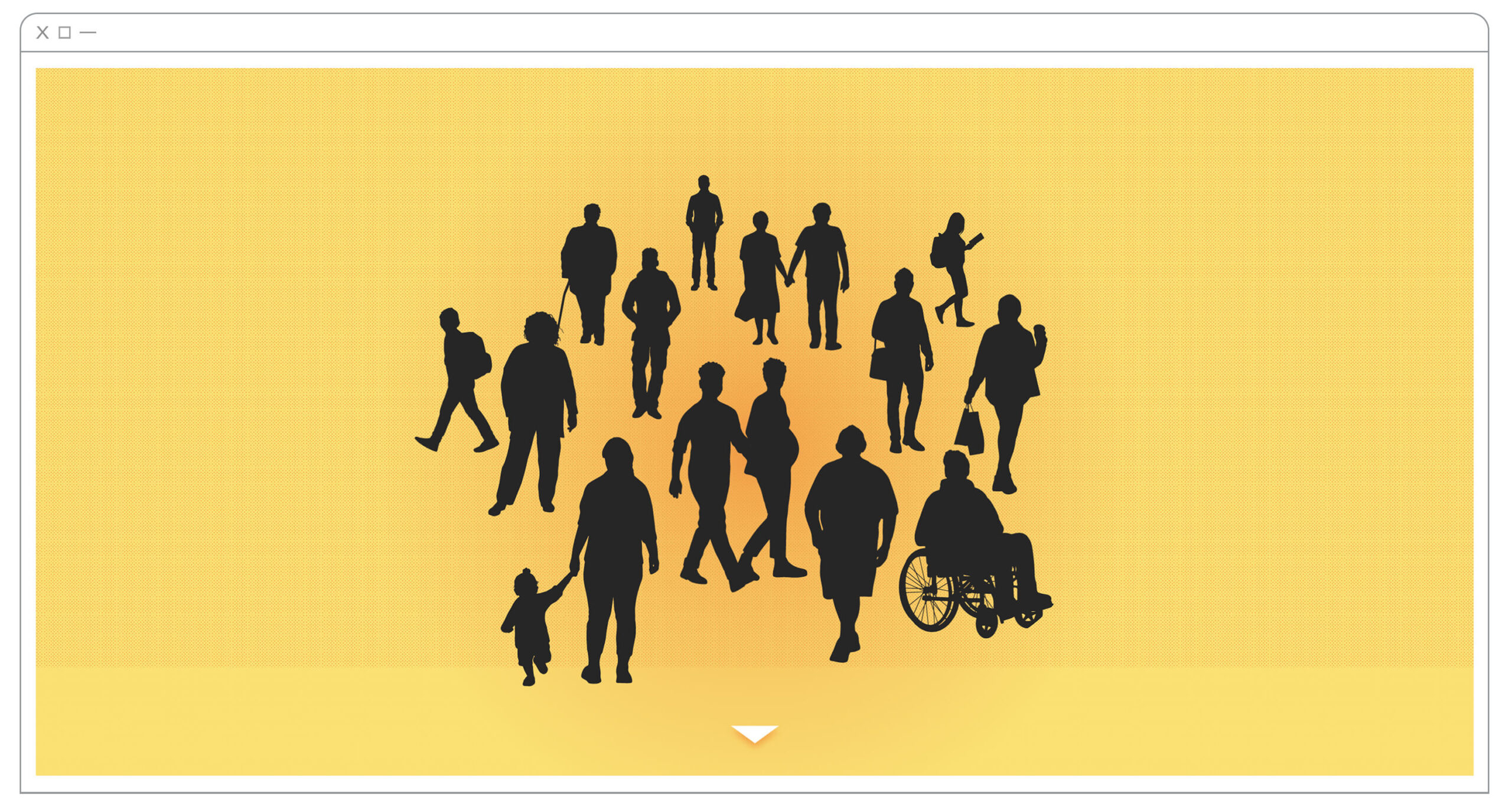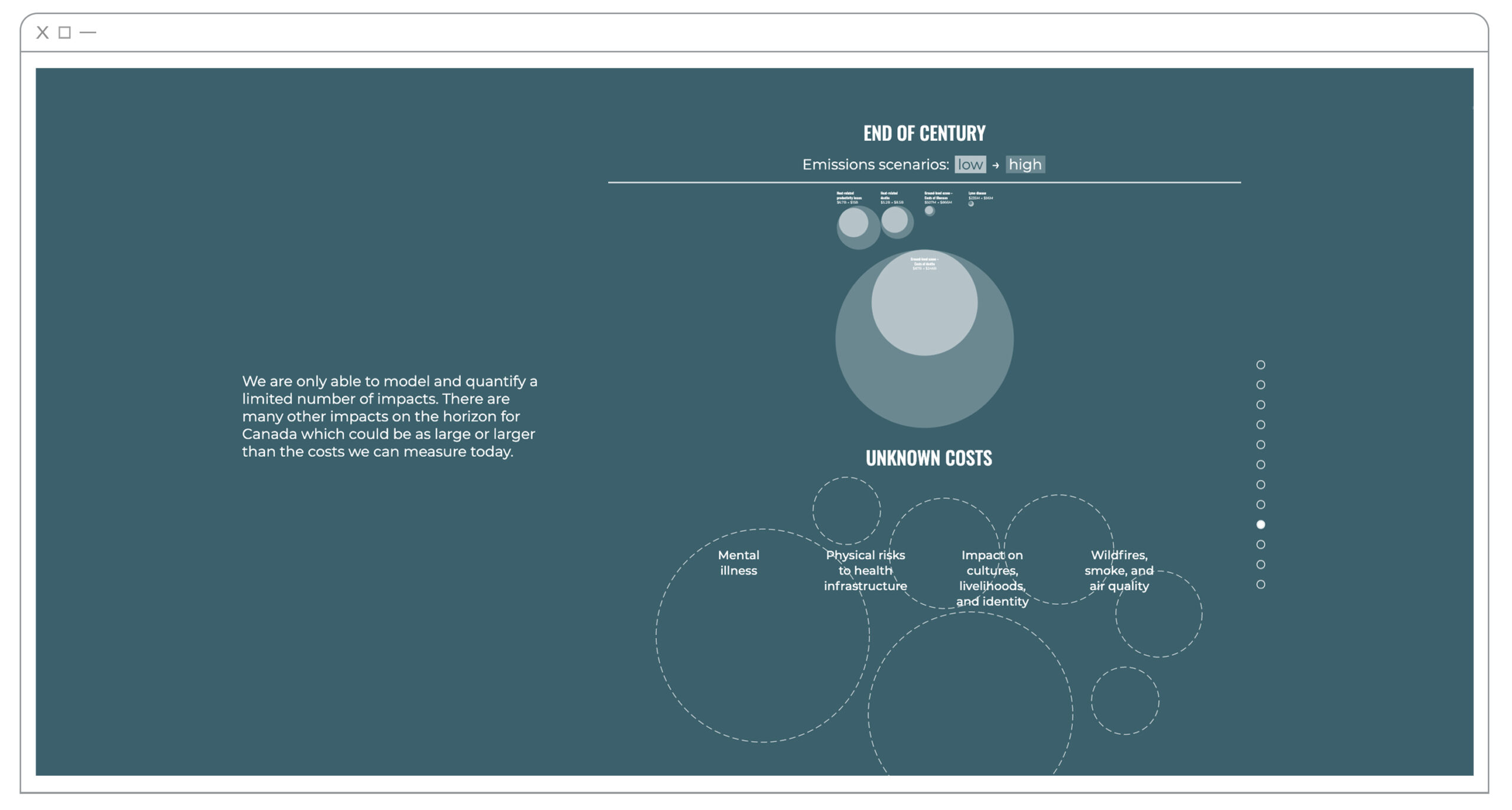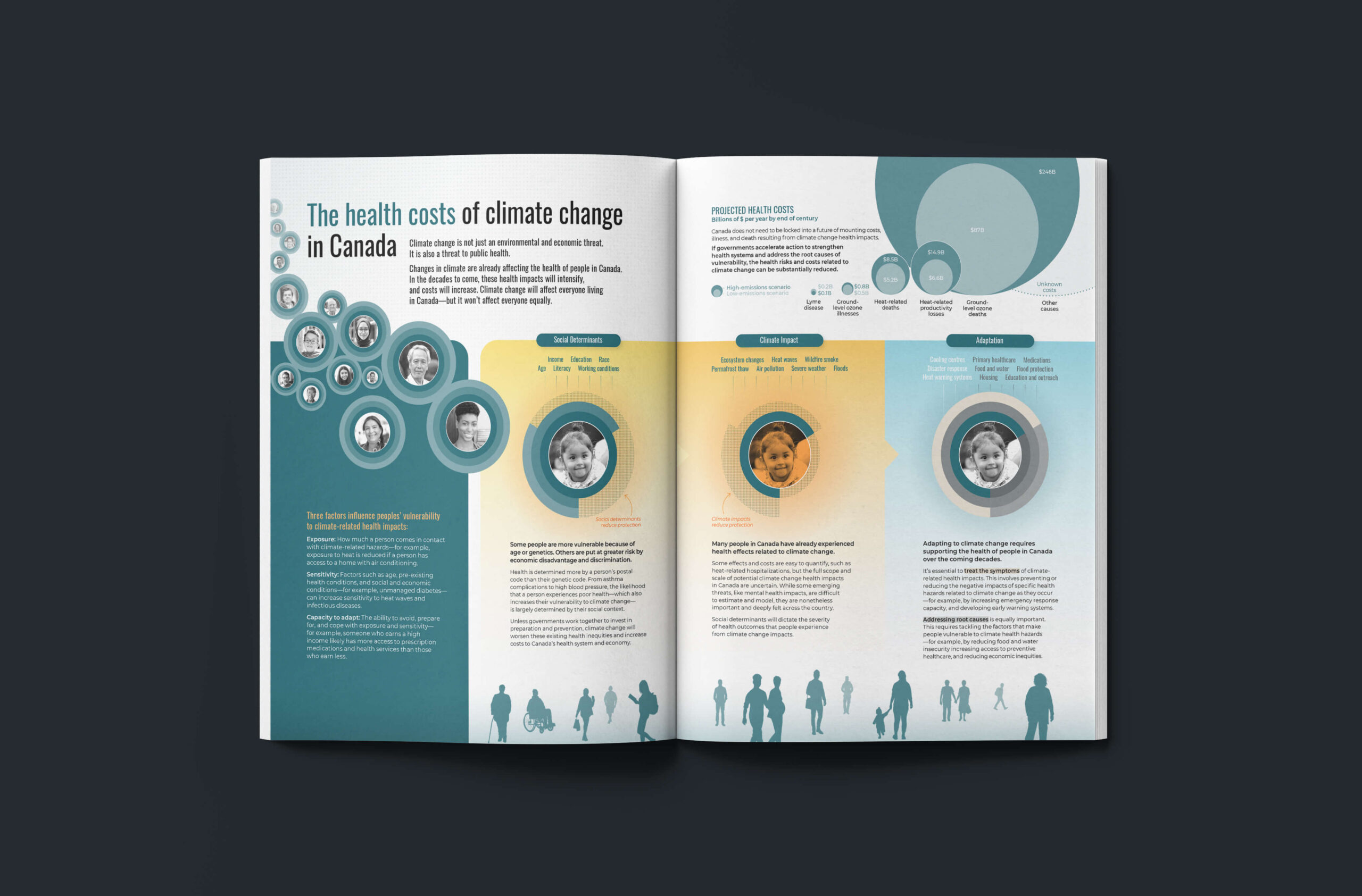Limiting the impacts of climate change on Canadian health
The Canadian Climate Institute launched a series of reports on the costs of climate change and the health of Canadians is the subject of its second publication. We worked together to present these findings in the form of a scrollytelling piece.

To jump to the scrollytelling piece, click here.
An overview of Canadian diversity
The scrollytelling opens with portraits of people of different genders, ages, cultures and religions representing the varied circumstances of Canadians. Their silhouettes are black and neutral to help you see yourself in the figures and connect with the subject. As the story unfolds, the colored background will change from yellow to blue depending on the negative or positive context. Here, against a yellow background, the health of the people represented is in danger.
Visualizing abstraction
Each person, depending on their background and social situation, is likely to see their health more or less affected by climate change in the years to come. We have illustrated this concept using the metaphor of a personal “shield.” This shield is made of layers that are stronger or weaker depending on various factors of vulnerability and social determinants. As the narrative unfolds, it becomes clear that heat waves, disease or air pollution, for example, can damage this shield to different degrees. Thus, a person whose circumstances cause their shield to be weaker will be much more vulnerable to the threats of climate change.
Known and unknown data
This visualization shows the increase in health costs according to two emission scenarios at the middle and end of the century. Represented by circular forms, these amounts of significant proportions evolve and grow until some even extend beyond the frame.
Cost projections that cannot be quantified at present are represented by larger, dotted circles, making it clear that the situation could get even worse.
From animated to static
This scrollytelling is also available in a static version that summarizes the main concepts. Adapted to a horizontal format, the content divides the page into four main parts: context, social determinants, impact of climate change, and adaptation needed to support population health.





